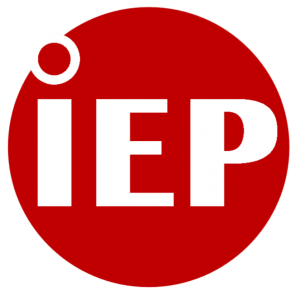 What is an Individualized Education Program (IEP)?
What is an Individualized Education Program (IEP)?
Most people just call this an IEP, but what does it mean for your child or yourself to be on an IEP. An Individualized Education Program (IEP) is a written document of the educational program designed to meet a child’s individual needs. Every child who receives special education services must have an IEP. That’s why the process of developing this vital document is of great interest and importance to educators, administrators, and families alike.
What is the Purpose of having an IEP?
The IEP has two general purposes: (1) to establish measurable annual goals for the child; and (2) to state the special education and related services and supplementary aids and services that the public agency will provide to, or on behalf of, the child. When constructing an appropriate educational program for a child with a disability, the IEP team broadly considers the child’s involvement and participation in three main areas of school life:
- the general education curriculum,
- extracurricular activities, and
- nonacademic activities.
By general education curriculum, we mean the subject matter provided to children without disabilities and the associated skills they are expected to develop and apply. Examples include math, science, history, and language arts.
When we talk about extracurricular activities and nonacademic activities, we’re referring to school activities that fall outside the realm of the general curriculum. These are usually voluntary and tend to be more social than academic. They typically involve others of the same age and may be organized and guided by teachers or other school personnel. Examples: yearbook, school newspaper, school sports, school clubs, lunch, recess, band, pep rallies, assemblies, field trips, after-school programs, recreational clubs.
The IEP can be understood as the blueprint, or plan, for the special education experience of a child with a disability across these school environments.
What is in an IEP?
During the IEP meeting, the different members of the IEP team share their thoughts and suggestions. After the various team members (including the parent) have shared their thoughts and concerns about the child, the group will have a better idea of that child’s strengths and needs. This will allow the team to discuss and decide on the statements associated with each IEP’s component, as listed within IDEA. This includes (but is not limited to):
- the child’s present levels of academic achievement and functional performance, describing how the child is currently doing in school and how the child’s disability affects his or her involvement and progress in the general curriculum;
- annual goals for the child, meaning what parents and the school team along with the data shows he or she can reasonably accomplish in a year;
- the special education and related services to be provided to the child, including supplementary aids and services (such as a communication device) and changes to the program or supports for school personnel;
- how much of the school day the child will be educated separately from children without disabilities or not participate in extracurricular or other nonacademic activities such as lunch or clubs;
- how (and if) the child is to participate in state and district-wide assessments, including what modifications to tests the child needs;
- when services and modifications will begin, how often they will be provided, where they will be provided, and how long they will last; and
- how the IEP team will measure the child’s progress toward the annual goals.
Click here for a closer look at each IEP component!
Source: Center for Parent Resources and Information (CPIR), updated January 2018.
Special Factors that Must be Considered for IEP Development
The Individuals with Disabilities Education Act (IDEA) lists five special factors that the IEP team must consider in the development, review, and revision of each child’s IEP: (1) Limited English Proficiency, (2) blind or visual impairment, (3) communication needs/deafness, (4) Assistive Technology, and (5) Behavior. Read IDEA’s exact words.
The special factors listed in Oklahoma are:
- #1 Limited English proficiency
- “Does the student have Limited English proficiency?”
If the answer is “yes,” the IEP Team must consider the student’s level of English language proficiency. It’s important to know that second language conversational skills are acquired in one to two years, but academic language proficiency is acquired over a longer period of time of five to seven years. Therefore, the IEP Team must consider the student’s level of English language proficiency to support and strengthen implementation of the IEP goals.
- # 2 Blindness or visual impairment
- “Is the student blind or visually impaired?”
If the answer is “yes,” the IEP team must provide for instruction in Braille and the use of Braille—unless the team “determines, after an evaluation of the child’s reading and writing skills, needs, and appropriate reading and writing media (including an evaluation of the child’s future needs for instruction in Braille or the use of Braille), that instruction in Braille or the use of Braille is not appropriate for the child [§300.324(2)(iii)]. The specific focus of this special consideration is on a child’s need for Braille instruction. The IEP team must also consider other appropriate supports and instruction to address a child’s needs related to blindness or visual impairment. Having accessible instructional materials is essential. Some examples include enlarged print materials, audiotaped materials, math manipulatives, or NIMAS-formatted materials.
- #3 Communication needs
- “Does the student have communication needs?”
If the answer is “yes,” the team will need to address these in the IEP, including (as appropriate) through the statement of annual goals, provision of special education and related services, supplementary aids and services, which includes assistive technology, or other relevant instruction, services, and supports. Understanding how a child does (or does not) communicate is paramount to designing appropriate instruction and services. And while any significant impairment in a child’s ability to understand and use language plays an enormous role in a child’s ability to learn and make progress in the general education curriculum, it does not, in and of itself, mean that a child cannot learn and make progress. Indeed, meeting and supporting a child’s communication needs can be pivotal to the child’s full participation and progress in the general education curriculum and nonacademic activities.
- #4 Deafness
- “Is the student deaf or hard of hearing?”
Under IDEA, this falls under Communication listed above.
- #5 Assistive technology
- “Is Assistive Technology necessary in order to implement the student’s IEP?”
- a. “If Assistive Technology is required to implement the IEP, describe the Assistive Technology that is needed?
- “Is Assistive Technology necessary in order to implement the student’s IEP?”
AT must be considered for all children with disabilities, regardless of disability, and as is true for other special factors, consideration must be individualized. Assistive technology services include evaluating the child to see if he or she could benefit from using an assistive device. These services also include providing the devices and training the child (or family or the professionals who work with the child) to use the device.
- #6 Behavior
- “Does the student’s behavior his/her learning or that of others?
If the answer is “yes,” then the team must consider the use of positive behavioral interventions and supports, and other strategies, to address that behavior [§300.324(2)(i)]. Members will talk about what the child needs and include this information in the IEP. As indicated in IDEA, this will include consideration of the use of positive behavioral interventions and supports (PBIS) and other strategies to address the child’s behavior.
- #7 Services Required
- “For any primary question above marked yes, are services required on the IEP?”
- a. “If yes, define services that will be provided through this IEP.”
- “For any primary question above marked yes, are services required on the IEP?”
If yes, this is where the IEP team is going to specifically list each and every service that will be used to fulfill the Special Considerations that are required by IDEA. Each special factor has considerations that need to be made and this is where you list those.
Who develops the IEP?
The IDEA is very clear about who all develops the IEP and needs to attend the meetings, this is called the IEP Team. It includes the following people, but is not limited to just these people, these are the people who are required by IDEA to be included.
- The Parents, it is important that you attend this meeting;
- At least one (1) Regular Education teacher who knows the curriculum for the child’s grade level and what children in regular education classes are typically expected to do;
- At least one (1) Special Education teacher who has more training with issues such as providing the supplementary aids and services needed, providing special accommodations, and other aspects of individualizing instruction to meet the child’s unique needs;
- The Administrative Representative is generally a principal or superintendent – they must have the power to commit the resources needed so that services can be provided as described in the IEP and will ensure those services will actually be provided;
- An individual who can interpret the instructional implications of evaluation results to explain the evaluation results and describe how to provide appropriate instruction to the student. He or she may already be a member of the team, such as a special education teacher, or may be someone else entirely, such as a school psychologist;
- The child with a disability (when appropriate). IDEA requires that the child be invited to the IEP meeting if transition goals and services are going to be discussed. Parents decide when it is appropriate for a child to attend meetings; and
- Any other individuals who have knowledge or special expertise regarding the child and have been requested by the school or the parent to attend.
How often should the IEP team meet?
The IEP team should meet at least once a year to take a look at the child’s IEP and how the child is progressing towards his or her goals set in the IEP. This is called an Annual Meeting. At this meeting, the IEP team will talk about the child’s present levels of educational performance, review last year’s goals and progress, and add new goals and measurements for the coming year.
Just remember that the IEP team CAN MEET any time before an Annual Meeting if the parent or school has a concern about the child’s educational plan.
What should parents do during the IEP meeting?
- Stay focused: Use notes to keep the team on track. Keep the focus on the child’s needs.
- Ask questions: If anything is not clear, ask for an explanation. Also, if there is a disagreement, ask for documentation that supports each member’s point of view.
- Be thorough: Do not move away from one area until it fully addresses the child’s needs. If an agreement cannot be made, add it to the parent list of concerns.
- Keep emotions under control: Remember, the purpose of the meeting is to outline the child’s educational needs by developing an IEP that is appropriate.
- Inform the school of your concerns: Be sure to write on the IEP, under Parent Concerns for Enhancing the Child’s Education. Parents are a member of the team and should write in this box.
- Understand that the school will have a draft IEP created: It is normal for your school to already have an IEP draft at the meeting. It is there as a starting point – not as the final IEP document. It should clearly state “Draft” on the document. This document does not become the final IEP until all changes have been made and it is signed by each member of the IEP team. Each member has the option to disagree with the IEP.
Although EdPlan is now used for the IEP development, Individual Education Program (IEP) Forms & Information are still available from the Oklahoma State Department of Education website:
- Form 1: Record of Access to Educational Records
- Form 2: Record of Parent Contact
- Form 4: Parent Consent
- Form 6: Notification of Meeting
- Form 8: Written Notice to Parents (Extended Version)
- Form 8: Written Notice
- Form 9: Medical Report
- Form 10: Surrogate Parents Verification of Training
- Form 11: Student Summary of Performance
- Form 12: Criteria Checklist
- Oklahoma Alternate Assessment Program (OAAP)
- Parents’ Rights in Special Education: Notice of Procedural Safeguards
- Spanish | Vietnamese | Chinese
- Consent for the Release of Confidential Information
- Minimizing the Use of Restraint Audit Tool
- Oklahoma School for the Blind Informational Flyer
- Oklahoma School for the Deaf Informational Flyer
- Medical Report
- Multidisciplinary Evaluation and Eligibility Group Summary (MEEGS)
- Review of Existing Data (RED) – English
Ed Plan Resources
- Compliance Symbols
- EDPlan Connect District Guide
- Eligibility Manual
- IEP at a Glance
- Progress Reports in Documents
- Quick Tips Sheet
- Upload External Documents
- User Type Access
Additional Documents from the Oklahoma State Department of Education:
- Personal Financial Literacy Guide for Students with Disabilities and English Language Learners
- Civil Rights: Procedural Requirements with Self-Evaluation Instrument
- Accessible Educational Materials (AEM) TA Guide
- Evaluation and Eligibility Basics for New Special Education Directors- Video Presentation
- Evaluation and Eligibility Overview for New Special Education Directors
- General Education Teacher Questionnaire
- Letter to Agency Seeking Juvenile Information
- Letter to Law Enforcement Regarding Special Education Student Records
- OSDE-SES Accommodations Guide | Synopsis
- OSEP Releases Fast Facts on School Aged Children with Disabilities
- Planning for Virtual or Distant Learning Services and Developing Contingency Plan in OK EdPlan
- Section 504 – OSDE
- Serving Children with Disabilities Placed by Their Parents in Private Schools FAQ
- Socio-Cultural Survey
The above information was updated by OSDE-SES in July 2024 and is located at the OSDE-SES Technical Assistance page. This page provides access to handbooks, manuals, and guides related to special education services, self assessment tools, and a link to the special education staffing page.
Updated: 21 February 2025

